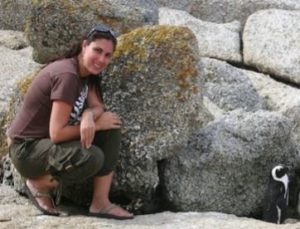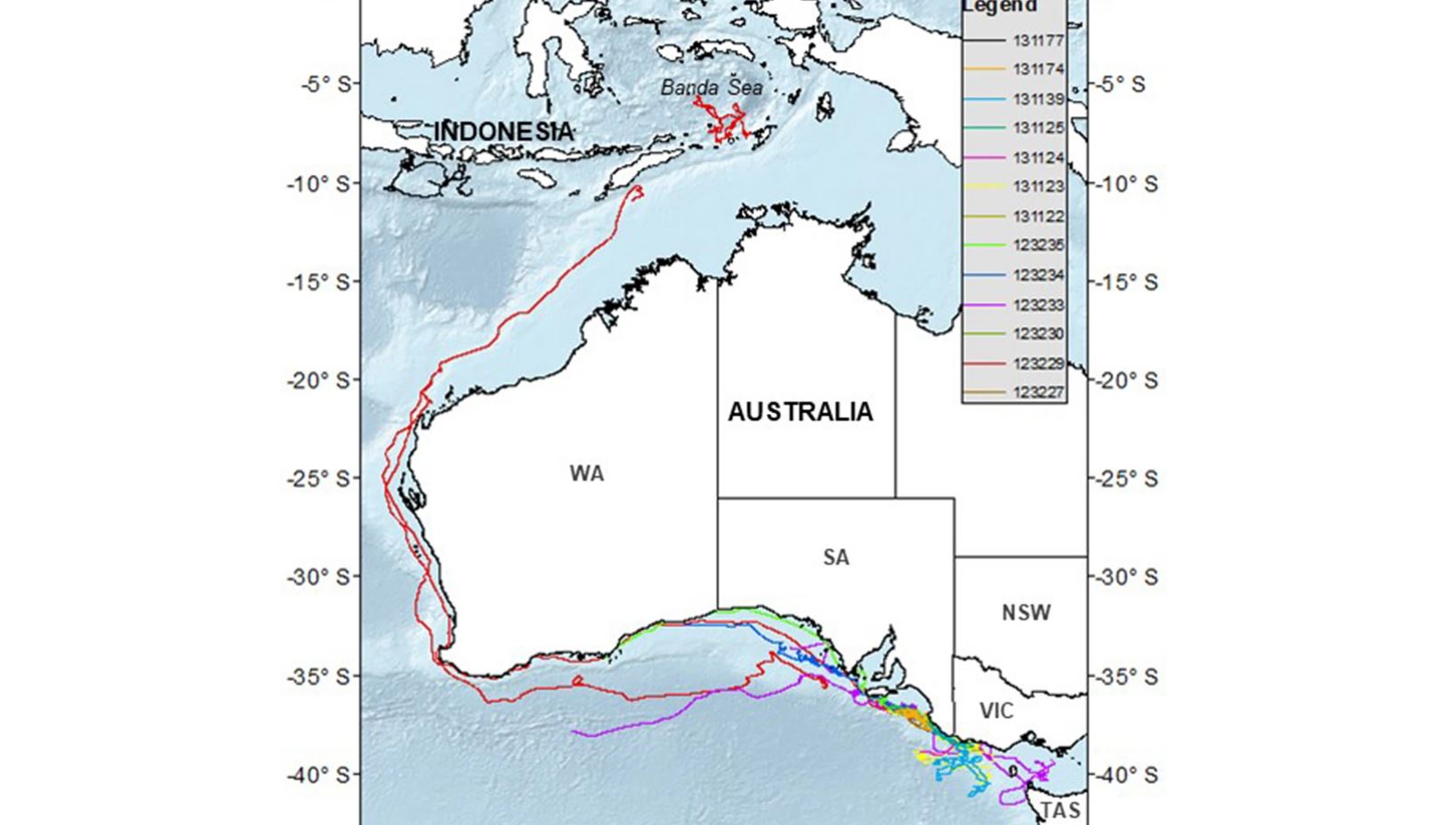Extensive satellite tracking has revealed important new knowledge about the little known pygmy blue whale population of Southern Australia.
Marine scientists from Flinders University, Australian Marine Mammal Centre, Blue Planet Marine and Macquarie University tracked the movements of foraging and migrating blue whales (Balaenoptera musculus brevicauda) along the Australian continental shelf on a journey towards breeding grounds in Indonesia as part of conservation efforts for the endangered species.
A team of researchers led by Flinders University Associate Professor Luciana Möller tracked the movements of 13 of the blue whale subspecies to determine important environmental habitats along foraging grounds and migratory routes in Southern and Western Australia, which incorporate major shipping and fishing routes, and areas targeted for oil and gas exploration – all activities known to negatively impact whale behaviour.
The research team travelled 4236 kilometres deploying tagging equipment and recording photos of individual pygmy blue whales before tracking them up to 382 days as they travelled as much as 15,120km during the study.
Published in Scientific Reports, the results shed light on the movements and distribution of the pygmy blue whale population to facilitate future conservation efforts for the endangered species.
Senior author and whale expert at Flinders University, Associate Professor Luciana Möller, says the study for the first time sheds light on the movements and occupancy patterns of the pygmy blue whales along Southern Australia's foraging grounds and migration routes to develop an understanding about potential impacts on their behaviour.
"Our tracking results provide new information and highlight the importance of understanding the movements and behaviour of pygmy blue whales in their migratory routes from Southern Australian foraging grounds to a Western Australian migratory corridor, and towards breeding grounds in Indonesia," says marine biologist Associate Professor Möller, who leads the Cetacean Ecology, Behaviour and Evolution Lab (CEBEL) and Molecular Ecology Lab at Flinders University.
"When combined with previous movement data, this information could be used to predict future whale presence and behaviour based on the forecasted effects of climate change, including in coastal and upwelling systems.
"More importantly, the ecological data can help mitigate the potential impacts of human activities such as oil and gas exploration on the little known pygmy blue whale population."

Associate Professor Möller says tagging information for the first time reveals the importance of foraging grounds in the Great Southern Australian Coastal Upwelling System, by identifying the importance of the Bonney Upwelling region and other smaller upwelling centres in Southern Australia.
"This new information, along with acoustic, sighting, genetic and past catch data, will substantially expand knowledge about the spatial distribution of this recovering blue whale population and its potential exposure to impacts from human activities throughout its travels.
"The data can contribute positively to various conservation management decisions for policymakers to consider in Australian, West Timor and Indonesian environmental legislation and forward planning, and for the development of international government collaborations to protect this little known subspecies of blue whales."
The paper, 'Movements and behaviour of blue whales satellite tagged in an Australian upwelling system' (2020) by LM Möller, CRM Attard, K Bilgmann, V Andrews-Goff, I Jonsen, D Paton and MC Double is published in Scientific Reports DOI: 10.1038/s41598-020-78143-2.







